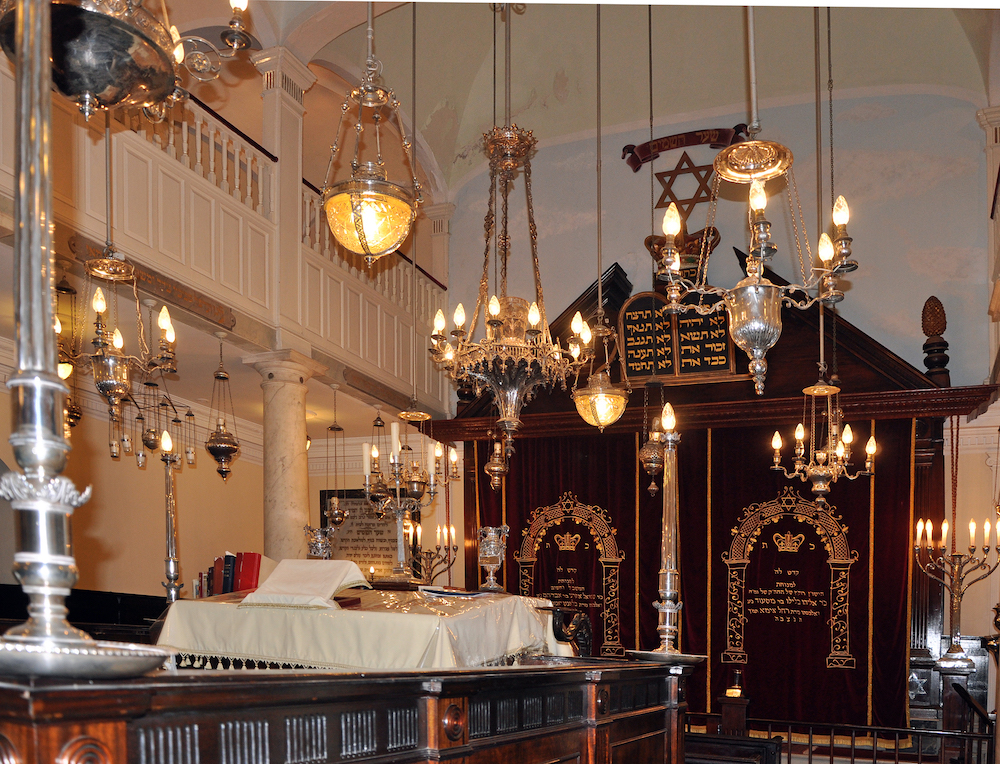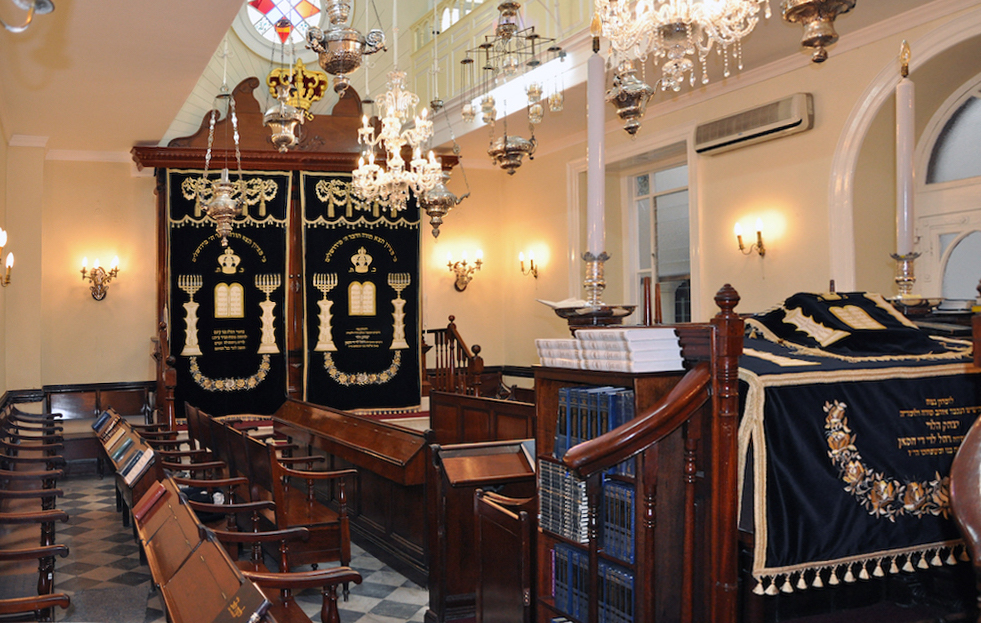
trategically located between two continents, Gibraltar has been home to a community of Jewish people ever since the Middle Ages. The earliest Jewish settlers were joined by others fleeing persecution in Andalusia in the later fifteenth century, and then by the Jews who were driven out of Spain at the end of that century. When Spain signed the Treaty of Utrecht in 1713, yielding the land to Britain, it stipulated that neither Jewish people nor Moors should be allowed to live there. Jews were duly expelled in 1717, but they fought hard against their expulsion, and many of those who left continued to be involved in trade with Gibraltar, and came back: "[t]he Jewish population was only temporarily reduced," writes Stephen Constantine (21). After all, the Jewish traders, with their valuable connections with Morocco, were indispensable — especially in times of conflict with Spain. As early as 1721, Commodore Stewart of the Royal Navy was negotiating with Moses Ben Hatar, treasurer of the Emperor of Morocco, to allow Jews to settle in Gibraltar ("History"), and property grants began to be made.
By 1725 Jews comprised "12 per cent of the civilian population" (Constantine 21). Despite the stipulation in the Treaty of Utrecht, the treaty with Morocco was extended in 1729 (Constantine 48), and the community was soon fully re-established. Although at first many Jewish settlers came from across the Strait, the granting of legal rights meant that new generations of Jewish people were now being born in Gibraltar itself. By the end of the eighteenth century, official figures show that "British and Gibraltar-born Jews had become a major economic presence" (Constantine 60). Many were engaged in commerce, and even when the percentage of Jews in the civilian population dropped a little, as this population itself expanded, by 1814 they still constituted 64 per cent of Gibraltar's traders (Constantine 60). During the Victorian period, therefore, the Jews were indisputably the Rock's most important traders, with Thackeray noting on his visit in 1844 that "[i]n Main-street the Jews predominate" (42).


Above left is Sha'ar Hashamayim Synagogue, Engineer's Lane, Gibraltar, which is the principal synagogue here. It was founded in the early eighteenth century but has been rebuilt several times since then — on one occasion, after being destroyed during the Great Siege. On the right is Abudarham Synagogue in Parliament Lane, Gibraltar, established in 1820 when new immigrants from Morocco wanted to have a "synagogue which was smaller and less formal than the Gibraltar institutions" ("Synagogues"). Its premises were previously used as a Freemasons' Hall. [Both photographs are by Moshi Anahory, kindly posted to Wikipedia and available on the Creative Commons licence, with attribution, and with the stipulation that any modification should be noted. These have been slightly modified for perspective.]

A Jewish Woman of Gibraltar, in a Fiesta Dress, by John Frederick Lewis. [Click on the image for more information.]
As might be expected, most of the Jews in Gibraltar are Sephardic, of Spanish descent. Their presence is marked not only by the four synagogues here, but also by schools, and by place names like El Boulevard Hebreo opposite Nefutsot Yehuda Synagogue, and Jews' Gate. The Nefutsot Yehuda Synagogue was opened in 1799, while City Hall itself was originally built by the Jewish merchant — and friend of Admiral Nelson — Aaron Nunez Cardozo (1762-1834), as his own residence. All this gives an idea of the important contribution the Jewish community has made and continues to make to the cultural life of the Rock.
Having been evacuated to Britain in World War II, many Jews never returned, but numbers have recently started to recover, and there is an obvious and pleasant mingling of various cultures in the thoroughfares here now, including Jewish families with their menfolk wearing the kippah.
Bibliography
Benady, Tito. "Communal History." Gibraltar Jewish Community. Web. 17 January 2019.
_____. "Synagogues." Gibraltar Jewish Community). Web. 17 January 2019.
Chipulina, Neville. "1779 - The Jews of Gibraltar — The Great Siege." The People of Gibraltar. Web. 17 January 2019.
Constantine, Stephen. Community and Identity: The Making of Modern Gibraltar since 1704. Manchester: Manchester University Press, 2009.
"Jews in Gibraltar." Museum of the Jewish People at Beit Hatfutsot. Web. 17 January 2019.
Kadish, Sharman. Jewish Heritage in Gibraltar: An Architectural Guide. Reading: Spire, 2007.
Titmarsh, M. A. (W. M. Thackeray). Notes of a Journey from Cornhill to Grand Cairo. London: Chapman and Hall, 1846. Internet Archive. Contributed by the University of Oxford. Web. 17 January 2019.
"Virtual Jewish History Tour." Jewish Virtual Library. Web. 17 January 2019.
Created 17 January 2019
Last modified 22 August 2024